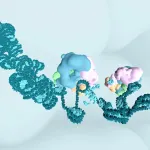(Press-News.org) In the span of only 15 years, a small academic elite has increased its share of academic citations significantly. In the year 2000, 14 per cent of all citations went to the top one percent of the most cited researchers. New research shows that this figure had risen to 21 per cent in 2015.
The people behind these remarkable findings are senior researcher Jens Peter Andersen, Danish Centre for Studies in Research and Research Policy (CFA) at Aarhus BSS, Aarhus University, and associate professor Mathias Wullum Nielsen (former CFA, now University of Copenhagen). Their examination of almost 26 million scientific papers and four million authors has just been published in the well-established interdisciplinary journal Proceedings of the National Academy of Sciences (PNAS).
"We had expected an increase, but we are surprised to find such a large one, meaning that more than every fifth citation now goes to such a small elite. This development might cause worry because we risk that a small powerful elite acquires immense influence on research ideas; on what is even considered as research topics," says Jens Peter Andersen.
A monopoly on the marketplace of ideas?
You could ask whether healthy competition exists when one per cent of researchers receive such a large share of the citations? Jens Peter Andersen points out that the trend can lead to an increased 'monopoly on the marketplace of ideas'.
According to Jens Peter Andersen, increased international competition leads to an academic world marked by greater inequality and in which the most cited researchers attract a growing part of the attention.
"Our data show that there is an elite who increasingly sets the agenda for the production of knowledge," says Jens Peter Andersen and continues:
"When established researchers set the agenda, we risk a stagnation in breakthroughs. This is a problem of diversity, not only related to those who get the opportunity to do research but also to the scope of ideas and methods that are accommodated - ideas and methods that could develop research along new lines."
An accelerating trend
The data do not say anything about the cause of the increasing citation concentration.
"You could imagine a self-reinforcing circle in which numerous citations lead to more grants and a broader network as a researcher, triggering an even larger number of citations," says Jens Peter Andersen.
According to Jens Peter Andersen, this has unfortunate consequences for the majority of researchers, seeing as citations play a large role in the applications for research funds and employment.
"It is not a one-to-one correlation, but all things being equal, those who receive many citations will often receive more grants and have an easier time getting accepted by the right places," says Jens Peter Andersen and continues:
"This makes it more difficult for others."
Jens Peter Andersen does not expect the accelerating trend to stop here, but rather a further increase in grants, publications and citations among elite researchers.
"We are now seeing more huge teams and interdisciplinary collaborations, the fusion of research fields, big data as well as improved measurements and computational techniques, and these factors could all play a role in increased citation concentration. However, it will require additional research to establish this link," he concludes.
INFORMATION:
The article is a part of the Independent Research Fund Denmark's project "Scientific Elites" which examines different aspects of the elites' education, characteristics and mechanisms for retaining their positions and will run until 2024. Read more about the "Scientific Elites" project here:
http://scientificelites.org/
Read Jens Peter Andersen and Mathias Wullum Nielsen's article "Global citation inequality is on the rise", published in PNAS:
https://doi.org/10.1073/pnas.2012208118
Contact info for Senior Researcher Jens Peter Andersen at Aarhus BSS, Aarhus University:
https://pure.au.dk/portal/en/persons/jens-peter-andersenhttps://pure.au.dk/portal/en/persons/jens-peter-andersen(b1e70d8a-0883-480d-8c07-5a7775417377).html
Animal owners frequently report concerns and worries relating to caring for their animal during the pandemic, new research suggests.
The study, by the University of York, also revealed owners had increased their appreciation of their animals during the first lockdown phase. The notion that people "could not live without" their animals and that they were a "godsend" or a "lifeline" in the pandemic was frequently expressed.
The study has been investigating the role of animals as sources of emotional and physical support during the pandemic. More than 40 per cent of UK households are estimated to own at least one animal.
There was consensus among participants that companion animals constituted a reliable source of support, providing unconditional love, ...
When human cells have to adapt due to a wide variety of external influences, the BAF complex plays a central role because it controls the accessibility of the DNA and thus the information stored in it. In every fifth human cancer, a mutation is found in one of the BAF complex genes. Scientists from the research group of Principal Investigator Stefan Kubicek at the CeMM Research Center for Molecular Medicine of the Austrian Academy of Sciences have investigated this complex in more detail using novel techniques and were able to show how quickly changes in the BAF complex genes influence the accessibility of DNA. The study has now been published in Nature Genetics.
Chromatin is a central component of the cell nucleus and refers to the material that ...
In nature, as in everyday life, we are surrounded by resonance - the phenomenon that describes how each object has a frequency that it prefers to vibrate at. The note of a guitar string and the sound of Big Ben chiming are examples of resonance.
Vibrations near resonance cause strong impacts. Bridges collapse if soldiers march in unison; a kid can 'push' themselves on a swing by moving their legs at the correct rate, and two pendulum clocks on the same table will synchronise. These examples show the enhanced sensitivity given to an object when it is provided with energy at a specific (that is, resonant) frequency. It's no wonder then that physicists and engineers are always looking for ways to use ...
Causal reasoning is ubiquitous - from physics to medicine, economics and social sciences, as well as in everyday life. Whenever we press the button, the bell rings, and we think that the pressing of the button causes the bell to ring. Normally, causal influence is assumed to only go one way - from cause to effect - and never back from the effect to the cause: the ringing of the bell does not cause the pressing of the button that triggered it. Now researchers from the University of Oxford and the Université libre de Bruxelles have developed a theory of causality in quantum theory, according to which cause-effect relations can sometimes form cycles. This theory offers a novel understanding of exotic processes in which events do not have a definite causal ...
"86 percent of the respondents rate the home office regulation as appropriate," says BfR-President Professor Dr. Dr. Andreas Hensel. "This illustrates that people also accept changes in their everyday occupational life in order to contain the coronavirus."
https://www.bfr.bund.de/cm/349/210119-bfr-corona-monitor-en.pdf
Day-care centres and schools are still closed except for emergency care. However, this measure is judged as appropriate by a decreasing number of respondents: Since the beginning of the year, approval has dropped by 10 percentage points from 67 percent to now 57 percent. A similar development can be seen in the acceptance of the closure ...
Understanding the interaction of organisms in the evolution of species is an important topic in ecology. Insects and plants, for example, are two large groups on earth that are linked by a variety of interactions. Since the mid-20th century, theories linking this diversity and specific interactions have proliferated.
The development of new technologies and new methods has made it possible to study the interaction between plants and insects in greater detail and to reveal the impact of these interactions on their respective evolution. In a new study, an international team of researchers, including botanist Prof. Stefan Wanke of TU Dresden, has established the link between ecological changes, ...
During the COVID-19 pandemic, small and medium-sized firms (SME) have become increasingly dependent on social media as a tool for their international sales process, according to a recent study published in International Business Review. Digital communication tools seem to be most prevalent in finding and reaching new prospects and in the persuasion phase, whereas more traditional communication tools still prevail in customer relationship management.
"During the COVID-19 outbreak, small and medium sized firms have become more reliant on social media tools to reach internationally dispersed prospects and customers. Such use has helped them to overcome limitations set to face-to-face interaction by ...
In both life and music, the secret to success is love. This universal emotion stands out as the key protagonist in the most listened-to songs of all time. According to a study by Salvador Climent Roca and Marta Coll-Florit from the GRIAL applied linguistics research group (tied to the UOC Faculty of Arts and Humanities), love is central to 52 of the 71 songs that topped the Billboard magazine's year-end charts from 1946 to 2016. "Pop music is created to achieve commercial success, and evocations of feelings of love and unrequited love are powerfully attractive for all types of audiences," said the authors.
Their analysis, published in open access in ...
Low-income mothers feminize their children in the womb by adjusting their hormones, whereas high-income mothers masculinize their children, a major study based on finger length, led by a Swansea University expert, has found.
The phenomenon is an unconscious evolutionary response aimed at boosting their offspring's chances of successful reproduction.
It helps, in part, explain associations between low income, low levels of testosterone before birth, and major causes of mortality such as cardiovascular disease.
The study was based on the relationship between the length of a person's index and ring fingers, known as the 2D:4D ratio. A longer ring finger is a marker of higher levels of testosterone, whereas ...
Rising global temperatures are causing frozen Arctic soil-- permafrost--in the northern hemisphere to thaw and release CO2 that has been stored within it for thousands of years. The amount of carbon stored in permafrost is estimated to be four times greater than the combined amount of CO2 emitted by modern humans.
Research results from an international team, which includes a researcher from the University of Copenhagen among others, suggests that the newly discovered phenomenon will release even larger quantities of CO2 than once supposed from organic matter in permafrost--a pool of carbon previously thought to be bound tightly and safely sequestered by iron.
The amount of stored carbon that is bound to iron and gets converted ...







